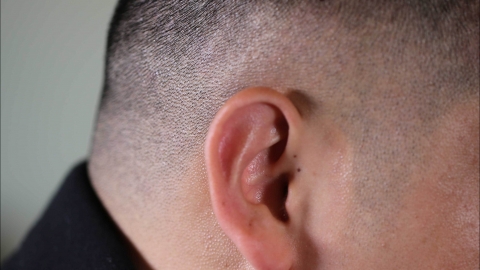How to quickly reduce swelling from frozen ears
Generally speaking, there is no such thing as "how to quickly reduce swelling when ears are frostbitten." Swelling of the ears due to cold exposure may result from factors such as constriction of blood vessels in the ear skin, thin and delicate ear skin, mild frostbite, moderate frostbite, or severe frostbite. It is recommended to seek medical attention promptly, determine the extent of frostbite, and then improve the condition under a doctor's guidance through general treatments, medications, etc. Specific analyses are as follows:

1. Vasoconstriction of ear skin: In low-temperature environments, blood vessels in the ear skin rapidly constrict, slowing circulation and causing tissue hypoxia and ischemia, which leads to swelling. Immediately leave the cold environment and enter a warm room. Gently wipe the ears with lukewarm water at 37–40°C to promote vasodilation. Each wiping session should last 10–15 minutes; avoid using hot water for soaking or washing.
2. Thin and delicate ear skin: The skin on the ears is naturally thin with little subcutaneous fat, resulting in poor heat retention and increased susceptibility to cold-induced swelling. When going outdoors, wear earmuffs or use scarves to cover the ears, choosing warm materials such as wool or fleece to minimize direct cold exposure to the ear skin.
3. Mild frostbite: After cold exposure, the ears may become red, swollen, and itchy without skin breakdown—this is classified as mild frostbite. Patients should apply topical medications such as chilblain ointment, vitamin E cream, or heparin sodium cream as directed by a physician. Gently massage the area after application to enhance absorption and relieve swelling and itching.
4. Moderate frostbite: As frostbite worsens, blisters appear on the ears accompanied by significant pain, indicating moderate frostbite. Do not puncture blisters yourself. Follow medical advice to apply topical antibiotics such as mupirocin ointment, erythromycin ointment, or compound polymyxin B ointment to prevent infection, while continuing to apply chilblain ointment to support healing.
5. Severe frostbite: This involves ulceration and necrosis of the ear skin, with marked swelling and intense pain. Debridement must be performed by a healthcare professional to remove dead tissue and prevent the spread of infection. After surgery, follow medical instructions to take oral antibiotics such as cefuroxime axetil tablets, amoxicillin capsules, or metronidazole tablets to combat infection and promote wound healing.
In daily life, keep the ears clean and dry, and avoid scratching frostbitten areas to prevent skin damage. Diet-wise, increase intake of protein- and vitamin-rich foods such as eggs, milk, fresh fruits, and vegetables to strengthen skin resistance and aid recovery of the ears.




